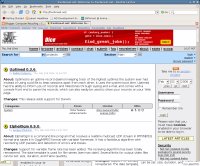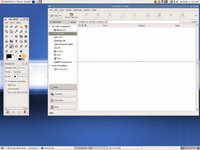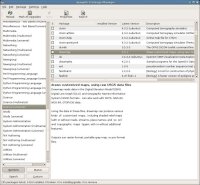If you're a computer technician who's been around for awhile you're probably shaking your head in disbelief at the title of this article. As ridiculous as the title might seem it's an impression quite a few people come into our computer refurbishing shop with. The problem I think is that everyone sees what their neighbour has and decides that's what they need.
Computing.net has a message thread in which people discuss getting on the Internet with a range of low end PC's right down to the first PC clone I ever owned the XT clone. For those who are not up on their Intel chips here's a bit of a progression (excluding Celeron chips):
Pentium 4 -> Pentium 3 -> Pentium 2 -> Pentium Pro -> Pentium 1 -> 486 -> 386 -> 286 -> XT
I've excluded the SX and DX division in the 486 and 386 chips for simplicity sake.
So if you can get on the Internet with a computer that's at least 8 generations older than a Pentium 4 why do people suggest Pentium 4? Part of the problem has to do with support. While it's possible to use operating systems like DOS, Linux, and Windows 95 on the Internet, large Internet Service Providers (ISPs) like Rogers Cable don't want to have to support these operating systems. For these companies it's more ideal to support everyone using Windows XP.
Here's the problem: Windows XP Home Edition costs roughly
$120 CDN, that's priced higher than 95% of the refurbished systems we sell in the shop. You don't need a Pentium 4 to run Windows XP. In fact I've personally run Windows XP (Professional) on a Pentium II 350MHz and it ran reasonably well. They key factor for Windows XP is RAM, the more the better. While the minimum recommendation for Windows XP is 64MB of RAM, a much more reasonable recommendation is 256MB of RAM.
There's a catch-22 in the refurbishing industry surrounding RAM. The older and rarer the RAM is, the more expensive it often is. 128MB SDRAM memory can sometimes be difficult to come by, 256MB and 512MB SDRAM sticks are even rarer. In all the systems we've built in the past 8 months we've included at least 128MB of RAM. A few systems have gone with more at special request, but we generally stick to 128MB of RAM. With systems beginning at about $40CDN for a Pentium III with 128MB of RAM we walk a thin line between what the RAM costs at most
places in town and what we sell a complete system for.
So if you don't need a Pentium 4 to get on the Internet, what kind of system would do the job in a reasonable fashion? If you're on a very tight budget, a Pentium II 350MHz should be more than adequate. If all you want to do is surf web sites, type up documents, play some tunes, a 350MHz Pentium II is good enough.
Now let's talk operating systems. We've already covered the cost for Windows XP. I don't recommend keeping an unlicensed version of Windows XP on your computer. Windows XP has a couple of security mechanisms to prevent software piracy: Windows Activation and Windows Genuine Advantage.
Windows Activation is a "feature" that a lot of people hate, only perhaps a little less than Genuine Advantage. Activation ensures that a license is matched to a machine. Change too much in the machine and you have to reactivate Windows. People dislike Windows Activation and Genuine Advantage for privacy reasons, perhaps rightly so. Information about your computer is collected by Microsoft. Genuine Advantage ensures that your copy of Windows is legitimate. It does this by communicating with Microsoft servers and checking against registered licenses.
In business Genuine Advantage is quite handy, it makes spotting systems that might not be properly licensed simple. But often consumers come into the shop wondering why they're getting a non-genuine message from the computer they bought at a garage sale... You get what you pay for in some cases. If you're buying a computer with Windows XP for less than $120 chances are you're buying something with an unlicensed copy of Windows XP. Certain dealers can get Windows XP inexpensively through reseller programs, but this is often only in a form where Windows XP gets pre-loaded on to a machine (i.e. you don't get the CDs when you buy the machine).
The Windows XP option is expensive, but it's the one you're most likely to get support for. At $120CDN it's not cheap, but you might save the cost in support.
Older versions of Windows can be difficult to come by. High speed Internet providers like Rogers and Sympatico currently still support Windows 98 on their software install CDs. EBay is one way to find legacy software, but be aware of what you're buying.
Linux is actually an excellent choice on refurbished systems. While many people are hesitant to adopt Linux, it really is a superb choice on refurbished systems. Why is it a great choice? Stock installations of most Linux distributions include a lot more software than stock installations of Windows, including Windows XP and Vista. Linux isn't perfect, it sometimes takes a bit of configuration to get certain programs to work correctly, but it's not as difficult as general perception suggests.
I'll leave the philisopical discussion of Linux for another post. The important part I want to stress is that using Linux isn't difficult.
If you are going to use Linux on high speed Internet I recommend buying a router. This will simplify configuring your high speed Internet connection and provide an extra layer of security (most routers come with a simple firewall). Scratch that, regardless of what operating system you use, even Windows XP, it's still a good idea to get a router. Routers are cheap, many can be found for around $30CDN. Just be sure to get the documentation. If you're using Linux you'll need to go through the router manual to find the web address to use in order to connect to the router and set it up with your high speed modem. From there you can release and renew the address the high speed modem uses and be on your Internet merry way.
In summary: You don't need a Pentium 4 to get on the Internet. While it's possible to get on the Internet with very old systems a good starting point is a Pentium II 350MHz with 128MB of RAM and Windows 98 or Linux. Buy a router, they're cheap and offer a layer of protection you don't get just connecting your computer directly to a high speed modem.

 There are lots of web sites you can start looking for Open Source software. The great thing about these sites is that they are trustworthy. It's very unlikely the software on the two sites I'm about to list will contain viruses or spyware - though it's not impossible that one might. My favourite Open Source web site is "Freshmeat" http://www.freshmeat.net/. Freshmeat has a clean, simple interface. I also like the fact that you can browse by the type of software (i.e. education, games, scientific) or by operating system, programming language, or a host of other things. If you're looking for a Windows program, you just need to click Browse, then Browse by Opertaing System, Microsoft, then Windows (or DOS if you like). Don't count out DOS - it might be an old operating system, but there is still some very cool software for DOS, such as Advanced MAME: A game arcade emulator for arcade monitors and TVs, and Atomic Tanks, a very cool tank game with various levels of artificial intelligence.
There are lots of web sites you can start looking for Open Source software. The great thing about these sites is that they are trustworthy. It's very unlikely the software on the two sites I'm about to list will contain viruses or spyware - though it's not impossible that one might. My favourite Open Source web site is "Freshmeat" http://www.freshmeat.net/. Freshmeat has a clean, simple interface. I also like the fact that you can browse by the type of software (i.e. education, games, scientific) or by operating system, programming language, or a host of other things. If you're looking for a Windows program, you just need to click Browse, then Browse by Opertaing System, Microsoft, then Windows (or DOS if you like). Don't count out DOS - it might be an old operating system, but there is still some very cool software for DOS, such as Advanced MAME: A game arcade emulator for arcade monitors and TVs, and Atomic Tanks, a very cool tank game with various levels of artificial intelligence.  Microsoft Windows is unquestionably the most popular desktop operating system in the world. With so many people using Windows, finding help usually isn't to difficult. Unfortunately there are a lot of security problems with Windows. There are many reasons for this that I won't get into here. Windows is also expensive. Windows XP Professional Edition, the full version with Service Pack 2, is currently selling on Staples.ca for $399.85CDN, much more than The Working Centre sells refurbished computers for. Given the cost of Windows XP it's easy to see why computer recyclers don't sell refurbished computers with Windows XP. And Microsoft Windows XP Professional doesn't even include Microsoft's famous Office suite. The full version of Microsoft Office 2003 Professional currently retails on Staples for $649.99CDN. There are light versions of Windows XP, known as Home, and Office, known as the standard edition, but these are missing features other operating systems and suites include. At over $1000 for just these two pieces of software it's easy to see why people are looking for alternatives... And one of those alternatives is an operating system I know and love called Linux.
Microsoft Windows is unquestionably the most popular desktop operating system in the world. With so many people using Windows, finding help usually isn't to difficult. Unfortunately there are a lot of security problems with Windows. There are many reasons for this that I won't get into here. Windows is also expensive. Windows XP Professional Edition, the full version with Service Pack 2, is currently selling on Staples.ca for $399.85CDN, much more than The Working Centre sells refurbished computers for. Given the cost of Windows XP it's easy to see why computer recyclers don't sell refurbished computers with Windows XP. And Microsoft Windows XP Professional doesn't even include Microsoft's famous Office suite. The full version of Microsoft Office 2003 Professional currently retails on Staples for $649.99CDN. There are light versions of Windows XP, known as Home, and Office, known as the standard edition, but these are missing features other operating systems and suites include. At over $1000 for just these two pieces of software it's easy to see why people are looking for alternatives... And one of those alternatives is an operating system I know and love called Linux. Ubuntu Linux comes with a program called Synaptic which makes installing software over the Internet as simple as right clicking and marking the programs you want to install - no scary text interface; though you could use one if you want, and sometimes doing things the old text-way is faster than moving the mouse and clicking on icons.
Ubuntu Linux comes with a program called Synaptic which makes installing software over the Internet as simple as right clicking and marking the programs you want to install - no scary text interface; though you could use one if you want, and sometimes doing things the old text-way is faster than moving the mouse and clicking on icons.